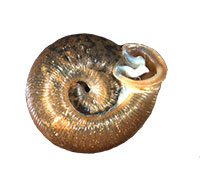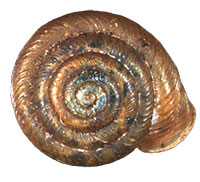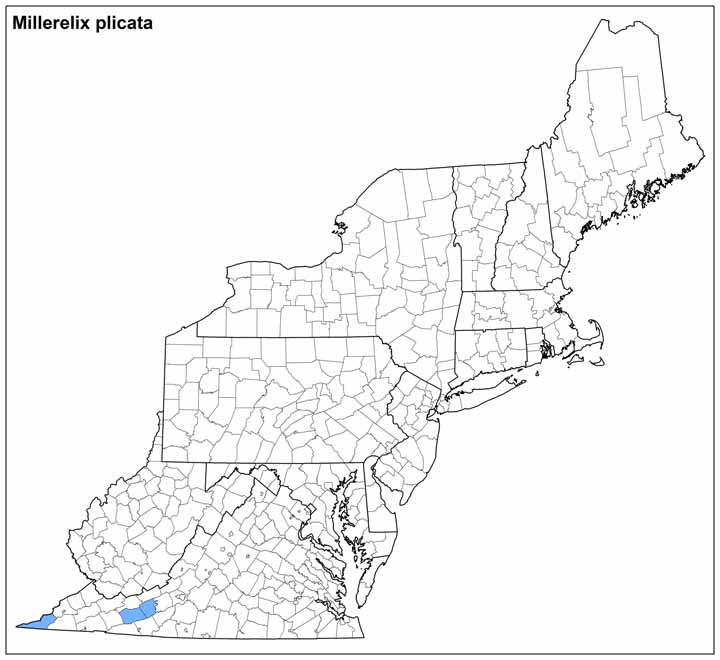Land Snails



Photo(s): Millerelix plicata has a unique peristome that follows the parietal lamella. Image © Dan Dourson.
Click photo(s) to enlarge.
Millerelix plicata (Say, 1821)
Family: Polygyridae
Common name: Cumberland Liptooth
Identification
Width: 5.5-5.7 mm
Height: 2.8-3.1 mm
Whorls: 5+
This animal’s shell is striking for its heavily-guarded aperture. The shell is a flattened heliciform shape, with a wide lip that is deflected toward the base (Pilsbry, 1940). The lip is contiguous with a strong parietal tooth, nearly filling the aperture. There are two irregularly-shaped teeth set within the outer lip. The umbilicus in early stages is perforate, but expands widely in the final whorl. The shell is sculptured with rib-striae and a few “hairs” behind the lip and in the umbilicus.
Ecology
This land snail is a calcium-lover found in leaf litter on dry wooded slopes and cedar glades (Hubricht, 1985). In Tennessee this species diverged from parts of Hubricht’s habitat characterization – it was significantly associated with leaf litter habitat, very steep slopes, and oak-poplar stands (Coney et al, 1982). Its numbers increased with increasing soil moisture, slope and soil pH, and there was an affinity for rich, old forest.
Taxonomy
Synonyms for Millerelix plicata include Daedalochila plicata and Polygyra plicata.
Distribution
Daedalochila plicata is an east-side snail of the southern Appalachians, found from Alabama and Georgia north to southern Ohio (Hubricht, 1985). In Virginia it is reported only from Lee County in the far southwest.
Conservation
NatureServe Global Rank: G4, Apparently Secure
NatureServe State Rank: Virginia, S1S3, Critically Imperiled to Vulnerable
Virginia’s wildlife action plan: Tier III
Ken Hotopp 12/2012
Range Map (click to enlarge)


